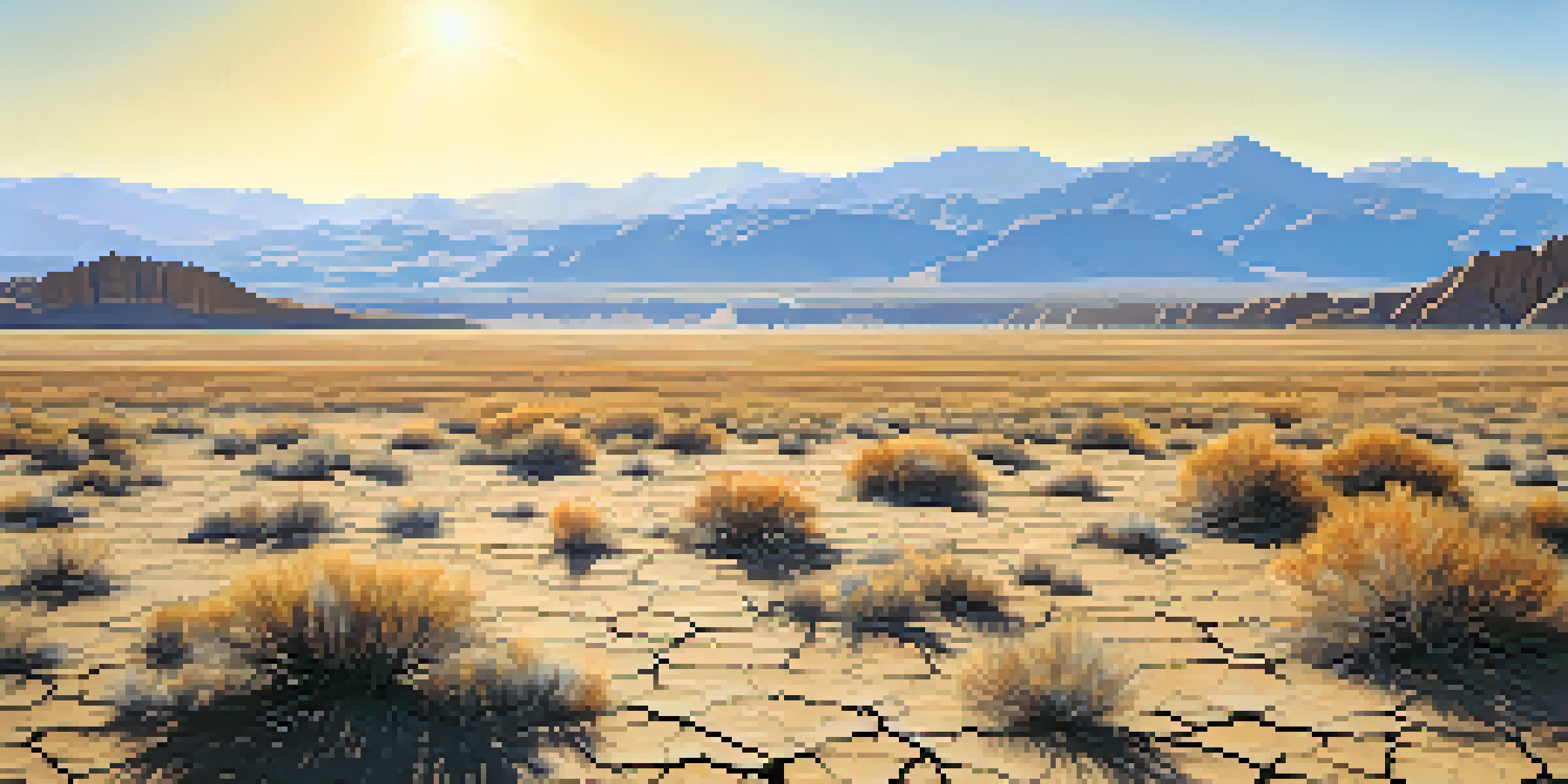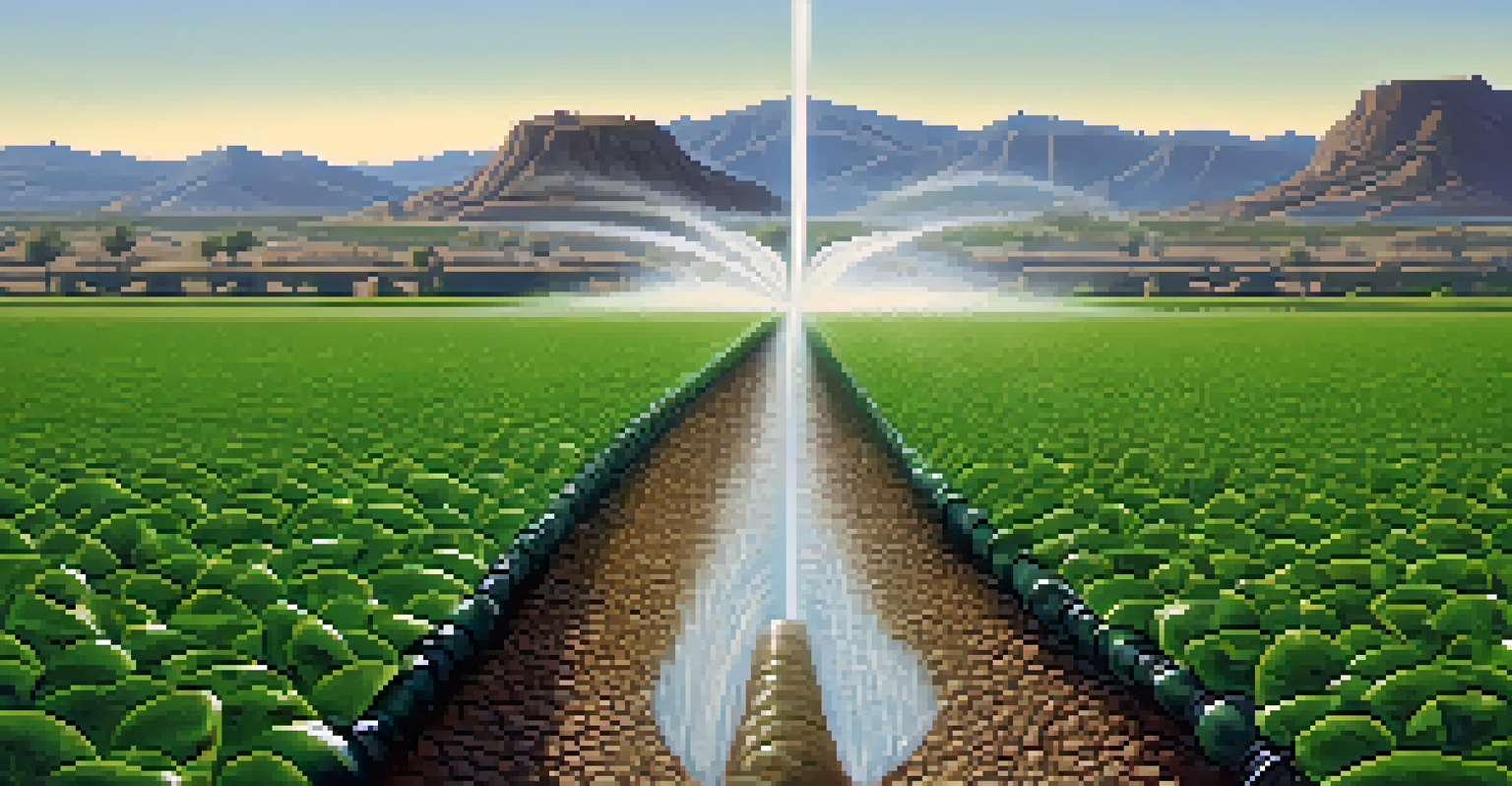Assessing the Impact of Drought on Colorado Water Resources

Understanding Drought and Its Causes in Colorado
Drought is a prolonged dry period that can significantly impact water resources. In Colorado, factors like climate change, changing precipitation patterns, and rising temperatures contribute to this phenomenon. Understanding these causes helps us grasp the severity and frequency of droughts in the region.
Water is the driving force of all nature.
For instance, the state has witnessed a shift in snowfall patterns, with less snowpack forming in the winter. This snowpack is crucial for water storage, as it melts in the spring and replenishes rivers and reservoirs. Without adequate snowfall, the risk of drought increases, leading to potential water shortages.
Additionally, human activities, such as urban development and agriculture, can exacerbate the effects of drought. As more water is diverted for irrigation and consumption, the natural replenishment of water sources can fall short, making it essential to assess our water management strategies.
Current State of Colorado's Water Resources
Colorado's water resources are managed through a complex system of rivers, reservoirs, and aquifers. The state relies heavily on the Colorado River, which provides water for millions. However, ongoing drought conditions threaten the sustainability of these vital water sources.

Recent data shows that many reservoirs are at critically low levels due to prolonged dry spells. This situation has led to increased competition for water among agricultural, municipal, and recreational users, highlighting the urgency of addressing water management.
Drought Threatens Water Resources
Prolonged dry conditions in Colorado are leading to critically low water levels, impacting agriculture and ecosystems.
Furthermore, groundwater supplies are facing pressure as communities tap into these reserves to meet their needs. This over-extraction can lead to long-term consequences, such as land subsidence and reduced water quality, making it crucial to monitor and manage these resources effectively.
Impact of Drought on Agriculture in Colorado
Agriculture is a significant part of Colorado's economy, but drought can severely impact crop yields and livestock production. Farmers depend on consistent water supply for irrigation, and when drought strikes, they often face tough decisions. Some may have to fallow fields or reduce their livestock herds, which can lead to financial strain.
We do not inherit the earth from our ancestors; we borrow it from our children.
For example, crops like corn and alfalfa require substantial water to thrive. During drought conditions, farmers may find it challenging to meet these needs, resulting in lower harvests. This not only affects their livelihoods but can also lead to increased food prices for consumers.
Moreover, the stress on water resources can push agricultural producers to adopt more sustainable practices. Innovations such as drip irrigation and drought-resistant crop varieties are gaining traction, helping farmers adapt to the changing climate while conserving water.
Drought's Effect on Colorado's Ecosystems
Drought doesn't just impact human activities; it also poses a threat to Colorado's diverse ecosystems. Water sources that support wildlife and vegetation can dwindle, leading to habitat loss and increased vulnerability for various species. This shift creates a ripple effect throughout the food chain.
For instance, fish populations in rivers may decline due to lower water levels and higher temperatures, making it harder for them to survive and reproduce. Similarly, native plants that rely on consistent moisture may struggle, affecting the animals that depend on them for food and shelter.
Agriculture Faces Water Challenges
Drought severely affects crop yields and livestock production, forcing farmers to make tough decisions to manage water scarcity.
These ecological changes underscore the need for integrated water management strategies that consider both human and environmental needs. By prioritizing ecosystem health, we can work towards a more sustainable approach to water use in Colorado.
Water Conservation Efforts in Colorado
In response to the challenges posed by drought, Colorado has implemented various water conservation initiatives. These efforts encourage residents and businesses to use water more efficiently and promote sustainable practices. From rainwater harvesting to xeriscaping, many strategies are being adopted across the state.
For example, cities like Denver have launched campaigns to educate the public on reducing water consumption. Simple changes, such as fixing leaks and using water-efficient appliances, can lead to significant savings. Additionally, local governments are incentivizing residents to replace traditional lawns with drought-resistant landscaping.
These conservation efforts not only help alleviate the pressure on water resources but also foster a culture of sustainability within communities. By collectively committing to water conservation, Coloradans are taking proactive steps to secure their water future.
Role of Technology in Water Management
Technology plays a pivotal role in enhancing water management strategies in Colorado. Innovations such as satellite monitoring and remote sensing allow for better tracking of water resources and usage patterns. This data can inform decision-making and help identify areas in need of conservation.
Moreover, advanced irrigation systems equipped with sensors can optimize water delivery to crops, ensuring that plants receive the right amount of moisture without waste. These technologies not only bolster agricultural productivity but also contribute to overall water efficiency.
Community Engagement is Essential
Involving residents in water conservation efforts fosters responsibility and collaboration, crucial for sustainable water management.
As we look to the future, integrating technology into water management practices will be essential for addressing the challenges posed by drought. By leveraging data and innovative solutions, Colorado can better navigate its water resource landscape.
The Importance of Community Engagement in Water Management
Community engagement is crucial for effective water management in Colorado, particularly during times of drought. Involving residents in discussions about water use and conservation fosters a sense of ownership and responsibility. When people understand the impact of their actions, they are more likely to adopt sustainable practices.
Local organizations and governments can host workshops and outreach programs to educate communities about the importance of water conservation. These initiatives encourage collaboration and empower individuals to contribute to solutions that benefit everyone.

Ultimately, a united front in addressing water issues will create a more resilient Colorado. By working together, communities can develop innovative strategies to manage water resources effectively, ensuring a sustainable future for all.